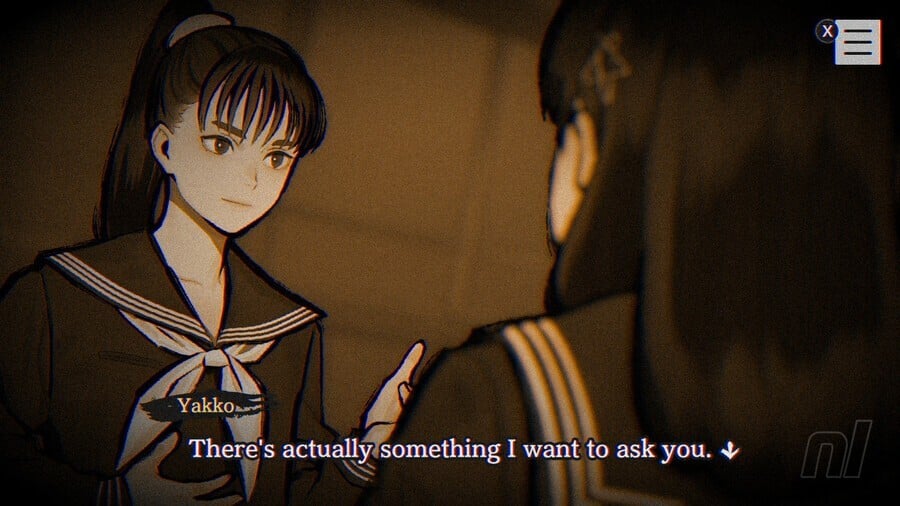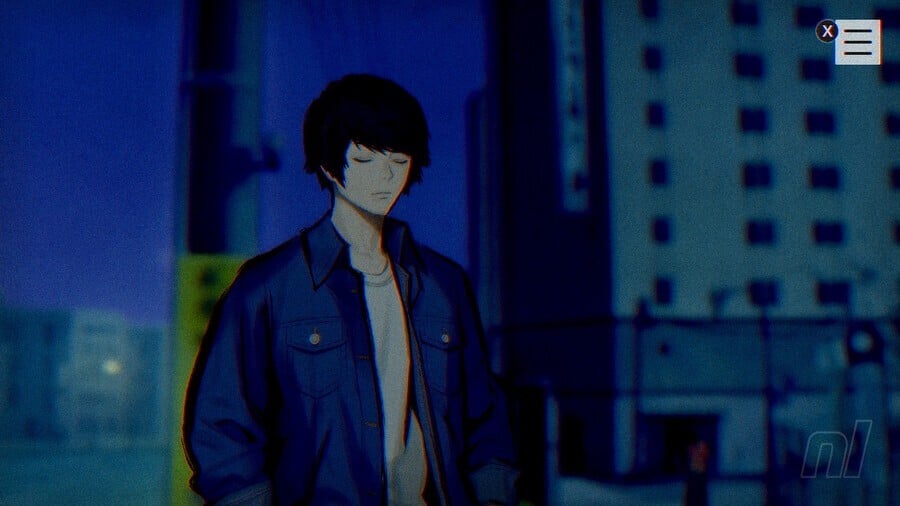Products You May Like

Square Enix’s stuffed slate of releases over the past year has given us some stellar titles, but among some of their biggest releases, this year’s Paranormasight: The Seven Mysteries of Honjo should not be overlooked.
Revealed during a Japanese Nintendo Direct in February and then launching just a moth later, this horror visual novel sees you unravelling the mysteries of the real-life urban legends known as The Seven Mysteries of Honjo, (or, sometimes, The Seven Wonders of Honjo). These Mysteries serve as tourist attractions in the Sumida Ward (formerly known as Honjo) of Tokyo, representative of ghost stories that have been passed down over generations since the Edo Period. Many of these stories aren’t set in stone and have had multiple interpretations over the years.
Somehow, though, the spirit of these legends has never been captured in a video game before. Enter developer xeen, which has collaborated with Square Enix on the Trials of Mana remake and also worked on Sega’s Rhythm Thief & the Emperor’s Treasure. And we think the developer has created an absolute winner; a chilling, atmospheric, and involved visual novel, we scored Paranormasight a 9/10 in our review.
We’ve had the opportunity to speak to Takaya Ishiyama, writer and director of the game; Kazuma Oushu, producer; and Gen Kobayashi, character designer (who’s most famous for The World Ends with You) to talk about the real-life inspirations behind the game, its unique atmosphere and art direction, and the series’ potential future.
Nintendo Life: Paranormasight is based on the real-life urban legend of the Seven Mysteries of Honjo. What was it that drew you towards those myths, and do you have a favourite myth or urban legend – either from those or anywhere else?
Takaya Ishiyama: There are many different interpretations of “The Seven Mysteries of Honjo”, and the fact that neither the number of mysteries nor their content are set in stone was fascinating, as it left so much room for imagination!

Kazuma Oushu: As these Seven Mysteries have been around since the Edo period, the tales bore resemblance to Japanese folktales, making many of them unique and interesting. While legends from ancient times have been passed down in various regions of Japan, it isn’t so common to find so many mysteries originating from a single region, and I got the impression that the stories would be a good fit for the game’s world as well as its theme, “the power of curses”.
There are a few surprisingly funny and light-hearted moments throughout the game. How difficult was it to balance this with the game’s overall uneasy tone, and how did you create that atmosphere?
it isn’t so common to find so many mysteries originating from a single region
Ishimaya-san: I’m proud to say that this is precisely my creative style, so the writing happened very organically. The works I’ve been involved in, such as The Detective Kibukawa Ryosuke Case Tale series and Schoolgirl Strikers also have atmospheres with a mix of humor and seriousness.
What was the idea behind The Storyteller and the TV set that appears frequently to the player throughout the story?
Ishimaya-san: The Storyteller is a necessary existence within the Paranormasight world. He is the guide who connects the player to the game, so his identity is a secret. We felt that the TV set was representative of the Showa Period and decided to make it a symbol for this title.

What was it like working with the Sumida City Tourism Division, and why did you want to take great care in creating an authentic representation of Sumida?
Ishimaya-san: They worked with us by giving us permission to shoot backgrounds, helping us decide on locations, and sharing materials from the Showa Period. We also cooperated with regards to promotion. We wanted to take care in depicting Sumida City and upholding its image because we were incorporating real-world urban legends as part of the game’s theme.
Oushu-san: We had been told by our contact at Sumida City that “The Seven Mysteries of Honjo” had been the subject of rakugo stories (the Japanese tradition of comic monologue storytelling) and books but had never been the subject of a game.
The designs themselves tended to be on the plain side, so I was conscious of adding personality through facial expressions, poses, and so on.
At first, both sides were exploring how to depict the story and what kind of initiatives were possible, but after they played the game (for background supervision) and accompanied us on location shoots, I think we were able to clarify what each side felt was important and should be respected.
We’re big fans of the hand-drawn art style of the characters, and we love the use of the grainy TV filter throughout Paranormasight. Where did this idea of blending the TV-esque feel and the more manga-style art come from?
Ishiyama-san: Since the game is set in the Showa Period and we used the CRT TV to symbolize that particular time period, in visualizing the concept we decided to add noise and filters evocative of old TV footage. Another motif inspired by old ghost stories was the analog feel of brush strokes, which prompted the addition of brush stroke-like touches to the characters’ line art, as well as GUI effects resembling brush strokes.

Kobayashi-san, given your work on The World Ends with You series, the designs in Paranormasight are much more ‘normal’ than the highly stylised characters of Shibuya – except for maybe Richter! How did you go about designing these characters, and how much did you know about the story while creating them?
Gen Kobayashi: Compared to The World Ends with You, I aimed to create a more realistic world with Paranormasight, so unique traits in the character design were kept within a range that wouldn’t feel out of place in a normal town.
We’re looking at a completely blank slate in terms of future developments
Since this work is set a little while back during the Showa Period in Japan, I tried to create designs that would evoke a sense of the times by incorporating fashion and hairstyles from that era. The designs themselves tended to be on the plain side, so I was conscious of adding personality through facial expressions, poses, and so on. An overview of the story had already been communicated to me at the start of the design process, so it wasn’t difficult to grasp the overall feel.
Are there any plans to return to the Paranormasight world and bring back some of these characters?
Ishiyama-san: We’re looking at a completely blank slate in terms of future developments, so it would depend on demand. Your continued support is very much appreciated!
This interview has been edited lightly for clarity. We want to thank Takaya Ishiyama, Kazuma Oushu, and Gen Kobayashi for speaking to us about this hidden gem.
Paranormasight: The Seven Mysteries of Honjo is available now on the Switch eShop.
